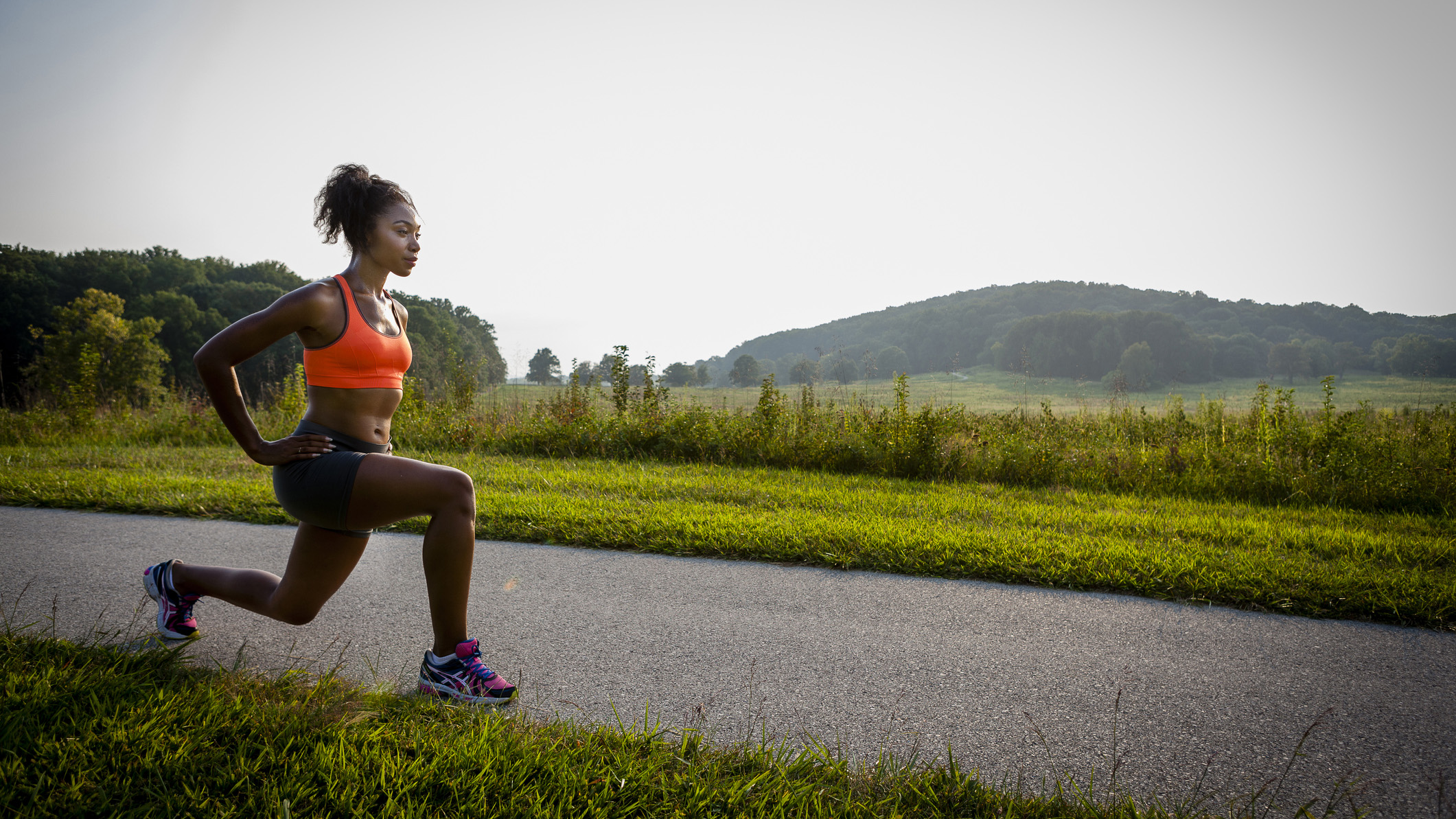Best exercises to build strength and endurance as recommended by an F1 Performance Coach
T3-exclusive workout from F1 Performance Coach Michael Italiano - no equipment required!



F1 drivers are admittedly one of the best-trained endurance athletes on the planet. They have to be physically and mentally ready to race for hours in an uncomfortable position while manoeuvring some of the fastest vehicles men can drive. To prepare, they train almost religiously under the supervision of F1 performance coaches and perform strength exercises, some of which we'll be showing you today.
The strength-building exercises you're about to see are courtesy of Michael Italiano, an experienced F1 performance coach, who was not only kind enough to supply us with the workout but also included reasoning for why he included each exercise in this roundup.
Better still, the below exercises are bodyweight-only so you can do them anywhere, anytime. I'd recommend wearing workout shoes and maybe using a yoga mat if you're working out on hard floor. Other than that, all you need is your body and some resilience so you can finish the workout.
Let's get cracking!
Michael Italiano is Daniel Ricciardo’s F1 Performance Coach and the owner of MI Coaching, an elite level coaching platform designed for everyone. To find an individual training plan to suit your lifestyle, visit his website today.
5 strength exercises recommended by an F1 Performance Coach
1. Clam Shell Thrusters
Main Muscle Worked: Glutes
Reason: To bring more power and stability through your hips and build up your glute muscles. When performed correctly you’ll feel your glutes really working.
Lie on your side with your feet and hips stacked, your knees bent 90 degrees with your forearm resting on the ground. Draw your knees in towards your body until your feet are in line with your glutes. Place your other hand on your left hip to ensure it doesn’t tilt backward. This is your starting position.
Get all the latest news, reviews, deals and buying guides on gorgeous tech, home and active products from the T3 experts
Keeping your abs engaged and your feet together, simultaneously raise your hips and top knee as far as you can without rotating your hip or lifting your right knee off the ground. Hold for 1 second, squeezing your glutes at the top of the movement, before slowly lowering your hip and knee back to the starting position.
2. Forward Lunge into Romanian Deadlift
Main Muscle Worked: Quadriceps & Hamstrings
Reason: A great exercise to develop strength through your posterior chain. This variation will work your legs and core at the same time while also improving your hip mobility and strength.
Start with your feet hip-distance apart. Begin to lunge forward with one leg, having both of your hands resting on your hips and lower the back knee to the ground. Now, push through your front leg and lift it off the floor. So the leg that was behind in the lunge now becomes the supporting leg.
Hinge your hips back as you extend the leg behind whilst leaning your torso forward, reaching your fingertips towards the floor to really accentuate the stretch of the supported hamstring. Drive through the front foot until you’re upright and continue to perform a forward lunge once again. Continue to execute the repetitions on one side before performing the exercises on the other leg.
3. L-Sit Hold
Main Muscle Worked: Abdominals
Reason: A difficult exercise that works the abdominals and quads tremendously. Perform this exercise consistently and watch your core and leg strength develop greatly.
Sit on the floor with your legs fully extended in front of you. Have both hands on either side of you with your fingertips only lightly in contact with the floor. Draw your belly button towards the back of your spine as you gently hinge back ever so slightly. Now squeeze your inner thighs together as you lift both legs off the floor.
Hold this position until the time lapses, trying your hardest not to round through your spine or letting your legs lower down.
4. Side Plank Rotations
Main Muscle Worked: Obliques
Reason: My favourite bodyweight oblique exercise. This exercise requires a lot of core strength, oblique tension and balance. Oblique muscles support the back and overall posture which is very important.
Start in a side plank position with the top foot rested on the bottom, or the top foot grounded in front of the bottom foot. Make sure your elbow is directly underneath your shoulder with your palm flat on the ground. It’s important to make sure you’re positioned correctly to avoid putting your shoulder under unnecessary strain.
Raise the top arm up to the ceiling to start, now begin to lower the arm down and then sweep it underneath your torso, making sure your head rotates in the same direction. Imagine you’re trying to reach that top arm behind you to really challenge your obliques, without lowering your hips.
5. Split Squat 1.5 Bottom Rep
Main Muscle Worked: Quadriceps
Reason: To strengthen the main muscles around the upper legs while also stimulating mobility in the hip, knee and ankles joints. Incorporating a 1.5rep makes the exercise more challenging, creating more time under tension and stabilisation.
Start in a staggered position with your legs, your back foot is on your toes throughout the whole exercise. Begin to bend the front knee as you keep your heel grounded. The majority of your body weight should be in that front leg.
Think about pushing your hips as far forward as possible, aiming to reach your knee as far over your toes as you can. This movement is challenging your ankle mobility massively.
Once you get to the bottom of the split squat, push your foot through the ground as you come up halfway, then drive back down to the bottom and then push up completely until your back in your start position. Please note not to fully lock your knee in the top position, and by keeping that soft bend it keeps constant tension on the front quadricep.
This feature is part of T3's Get Fit 2022 campaign. We’ll be bringing you a wealth of guides, features, deals and news to help you get healthy, fit and ready for anything the new year can throw at you. Whether you’re a newcomer to fitness or someone with a passion for it, we’ll bring you all the best workouts, diet advice and gear to set you on the right track.

Matt Kollat is a journalist and content creator who works for T3.com and its magazine counterpart as an Active Editor. His areas of expertise include wearables, drones, fitness equipment, nutrition and outdoor gear. He joined T3 in 2019. His byline appears in several publications, including Techradar and Fit&Well, and more. Matt also collaborated with other content creators (e.g. Garage Gym Reviews) and judged many awards, such as the European Specialist Sports Nutrition Alliance's ESSNawards. When he isn't working out, running or cycling, you'll find him roaming the countryside and trying out new podcasting and content creation equipment.

